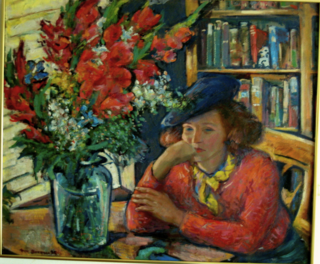 W
WAaron Berkman was an American Social Realist and Modern painter who was involved in the Federal Art Project, which was the visual arts arm of the Great Depression-era New Deal. Although born in Hartford, Connecticut in 1900, he later moved to New York City in 1929.
 W
WJohn Brewster Jr. was a prolific, Deaf itinerant painter who produced many charming portraits of well-off New England families, especially their children. He lived much of the latter half of his life in Buxton, Maine, USA, recording the faces of much of Maine's elite society of his time.
 W
WFidelia Bridges was an American artist of the late 19th century, and one of the few women to have a successful career in that period. She was known for delicately detailed paintings that captured flowers, plants, and birds in their natural settings. Although she began as an oil painter, she later gained a reputation as an expert in watercolor painting. She was the only woman among a group of seven artists in the early years of the American Watercolor Society. Some of her work was published as illustrations in books and magazines and on greeting cards.
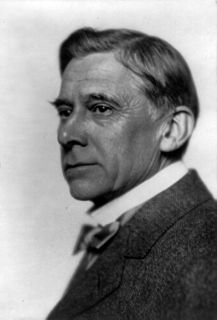 W
WGeorge de Forest Brush was an American painter and Georgist. In collaboration with his friend, the artist Abbott H. Thayer, he made contributions to military camouflage, as did his wife, aviator and artist Mary Taylor (Whelpley) Brush, and their son, the sculptor Gerome Brush.
 W
WGeorge Walker Bush is an American politician and businessman who served as the 43rd president of the United States from 2001 to 2009. A member of the Republican Party, he had previously served as the 46th governor of Texas from 1995 to 2000. Born into the Bush family, his father, George H. W. Bush, served as the 41st president of the United States from 1989 to 1993.
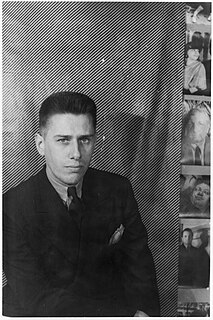 W
WPaul Cadmus was an American artist widely known for his egg tempera paintings of gritty social interactions in urban settings. He also produced many highly finished drawings of single nude male figures. His paintings combine elements of eroticism and social critique in a style often called magic realism.
 W
WMeriva M. Carpenter (1802–1887), was a noted nineteenth-century painter of landscapes and miniature portraits.
 W
WWinthrop Chandler was an American artist known for his portraits, mainly of family members and neighbors, and a few landscapes. He also worked as an ornamental artist.
 W
WJane Anthony Davis was an American artist. Until 1981 she was known only as J. A. Davis.
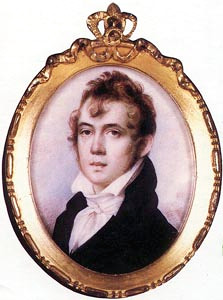 W
WAnson Dickinson was an American painter of miniature portraits who achieved fame during his lifetime, producing a very large number of works, but who is now largely forgotten.
 W
WSidney Edward Dickinson was an American painter.
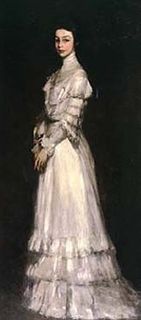 W
WEdith Dimock was an American painter. Her work was exhibited at the 1913 Armory Show in New York. She married fellow artist, William Glackens, but continued to use her maiden name professionally after the marriage.
 W
WGeorge Henry Durrie was an American artist whose rural winter scenes became popular when reproduced as lithographic prints by Currier and Ives.
 W
WGeorge Wharton Edwards was an American impressionist painter and illustrator, and the author of several books of travel and historical subjects.
 W
WJudith Eisler is an artist based in Vienna, Austria and Warren, CT.
 W
WClifford Prevost Grayson was an American painter and teacher.
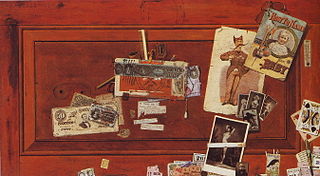 W
WJohn Haberle (1856–1933) was an American painter in the trompe l'oeil style. His still lifes of ordinary objects are painted in such a way that the painting can be mistaken for the objects themselves. He is considered one of the three major figures—together with William Harnett and John F. Peto—practicing this form of still life painting in the United States in the last quarter of the 19th century.
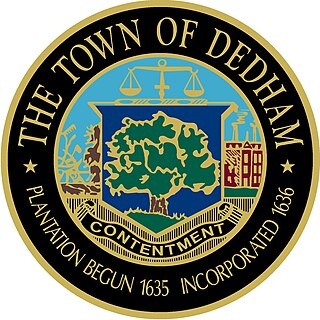 W
WLilian Westcott Hale was an American Impressionist painter.
 W
WSally Haley was an American painter. Her career spanned much of the 20th century and she is credited for helping to expand the emerging art scene in Portland, Oregon during the middle of the century. Much of her work was an application of egg tempera, a technique which leaves a flat, brushless surface. She preferred domestic subjects and interior spaces with hints of the indoor or outdoor space that lay beyond.
 W
WAnn Hall (1792–1863) was an American painter and miniaturist.
 W
WMilton William Hopkins was an American portrait painter in the folk art tradition.
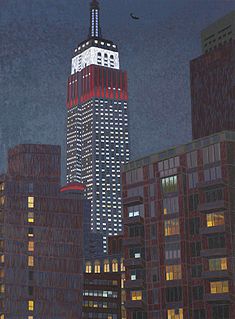 W
WYvonne Jacquette is an American painter and printmaker known in particular for her depictions of aerial landscapes, especially her low-altitude and oblique aerial views of cities or towns, often painted using a distinctive, pointillistic technique. She is currently represented by DC Moore Gallery, New York.
 W
WWilliam Johnston was a colonial American painter. He was the first painter to spend any significant amount of time in Connecticut, and was active in Portsmouth, New Hampshire as well.
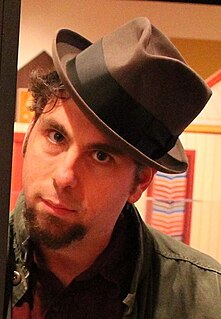 W
WTony Juliano is a satirist painter in New Haven, Connecticut and is affiliated with the international art movement Stuckism.
 W
WHarriet Korman is an American abstract painter based in New York City, who first gained attention in the early 1970s. She is known for work that embraces improvisation and experimentation within a framework of self-imposed limitations that include simplicity of means, purity of color, and a strict rejection of allusion, illusion, naturalistic light and space, or other translations of reality. Writer John Yau describes Korman as "a pure abstract artist, one who doesn’t rely on a visual hook, cultural association, or anything that smacks of essentialization or the spiritual," a position he suggests few post-Warhol painters have taken. While Korman's work may suggest early twentieth-century abstraction, critics such as Roberta Smith locate its roots among a cohort of early-1970s women artists who sought to reinvent painting using strategies from Process Art, then most associated with sculpture, installation art and performance. Since the 1990s, critics and curators have championed this early work as unjustifiably neglected by a male-dominated 1970s art market and deserving of rediscovery.
 W
WOsbert Burr Loomis was an American portrait painter. He is a founder of the Loomis Chaffee School.
 W
WJeanette Shepperd Harrison Loop (1840–1909) was an American painter.
 W
WElmer Livingston MacRae (1875–1953) was an American visual artist known for his paintings, pastels, and sketches, and for his role as a leading member of the Cos Cob Art Colony, in Greenwich, Connecticut. MacRae was one of the organizers of the influential 1913 Armory Show in New York; he was also instrumental in founding the American Pastel Society, as well as the Greenwich Society of Artists.
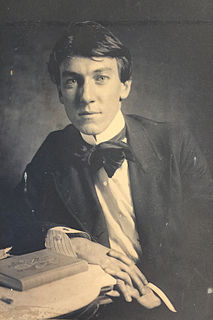 W
WSpencer Baird Nichols (1875–1950) was an American portrait painter, illustrator and muralist. Nichols was born to Henry Hobart and Indiana Jay Nichols on February 13, 1875 in Washington, D.C., and attended the Corcoran School of Art. He died August 28, 1950 in Kent, Connecticut. While he received much recognition and was quite prolific in his time, much of his creative work was ultimately destroyed, lost or unattributed to him. What survives are a handful of easel paintings and some commercial work, particularly book illustrations and murals. More of his earliest works, signed with just the initials, SBN, may gradually come to public recognition with the help of publications such as this.
 W
WDorothy Ochtman was an American painter.
 W
WSamuel Stillman Osgood was a 19th-century American portrait painter.
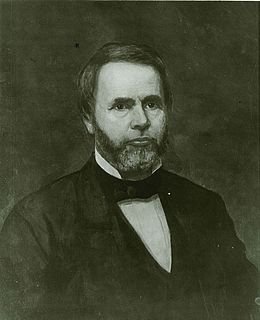 W
WIrene E. Parmelee, her surname also spelled Parmely, was an American painter and portrait artist.
 W
WAmmi Phillips was a prolific American itinerant portrait painter active from the mid 1810s to the early 1860s in Connecticut, Massachusetts, and New York. His artwork is identified as folk art, primitive art, provincial art, and itinerant art without consensus among scholars, pointing to the enigmatic nature of his work and life. He is attributed to over eight hundred paintings, although only eleven are signed. While his paintings are formulaic in nature, Phillips paintings were under constant construction, evolving as he added or discarded what he found successful, while taking care to add personal details that spoke to the identity of those who hired him. He is most famous for his portraits of children in red, although children only account for ten percent of his entire body of work. The most well known of this series, Girl in Red Dress with Cat and Dog, would be sold for one million dollars, a first for folk art. His paintings hung mostly unidentified, spare for some recognition in the collections like those of Edward Duff Balken, for decades until his oeuvre was reconstructed by Barbara Holdridge and Larry Holdridge, collectors and students of American folk art, with the support of the art historian Mary Black. Ammi Phillip's body of work was expanded upon their discovery that the mysterious paintings of a "Kent Limner" and "Border Limner" were indeed his.
 W
WAlain J. Picard is an American figurative, landscape, and portrait painter and writer. He resides in Southbury, Connecticut.
 W
WEunice Pinney was an American folk artist active in the towns of Windsor and Simsbury, Connecticut. According to art historian Jean Lipman, a specialist in American folk painting, Pinney and her contemporary Mary Ann Willson are considered two of the earliest American painters to work in the medium of watercolor.
 W
WJoseph Wiltsie Fuller Potter Jr. was an American Abstract expressionist artist. He was born in New York City in 1910, attended St. Bernard's School in New York and Groton School in Groton, Massachusetts, and lived most of his life in his Ledyard, Connecticut estate, near Old Mystic. Potter started painting in the traditional modes of representation, specializing in still life and landscape. His work was shown in New York in the 1930s at the Marie Harriman Gallery.
 W
WWilliam Tylee Ranney was a 19th-century American painter, known for his depictions of Western life, sporting scenery, historical subjects and portraiture. In his 20-year career, he made 150 paintings and 80 drawings, and is considered the first major genre painter to work in New Jersey, and one of the most important pre-Civil War American painters. His work is on display in several museums across the United States. One of his contemporaries opined, "A specimen of Ranney is indispensable wherever a collection of American art exists."
 W
WThomas Prichard Rossiter was an American artist born in New Haven, Connecticut. Known for his portraits and paintings of historical scenes, he later came to be associated with the Hudson River School of artists.
 W
WChauncey Foster Ryder was an early 20th century American Postimpressionist landscape painter known for a green-gray palette termed 'Ryder green'.
 W
WLucy Way Sistare Say was an American naturalist and scientific artist. Say illustrated and colored 66 of 68 plates which became American Conchology, a depiction of the North American mollusks collected by her husband, Thomas Say, during his expeditions in North America. Lucy Say became the first female member of the Academy of Natural Sciences of Philadelphia (ANSP) on October 26, 1841.
 W
WAaron Draper Shattuck was an American painter of the White Mountain School. He was born in Francestown, New Hampshire. Growing up during the civil war. He and his brothers/colleagues, helped the effort of the North with their conciderible creativity and imagination, by creating propaganda. A second-generation artist affiliated with the Hudson River School, Shattuck differed from most of his contemporaries in that he never studied abroad, and appears to have spent his entire life in New England.
 W
WHenry Pember Smith was an American painter, best known for his depictions of country cottages and river scenes around Lyme and East Lyme, Connecticut, and paintings of the sea and shore in New Jersey, Rhode Island, and Cape Ann to Maine.
 W
WJoseph Dwight Strong, Jr. (1853–1899) was an American artist and illustrator, known for his paintings. He was active between 1870s until 1899, in the San Francisco Bay Area, Monterey, Kingdom of Hawaii, and Samoa.
 W
WRobert Templeton was an American artist. His work includes the civil rights collection "Lest we forget...Images of the Black Civil Rights Movement", highlighting seminal figures from the movement. Templeton painted the portrait of former President Jimmy Carter that is displayed in the Hall of presidents of the Smithsonian Institution's National Portrait Gallery.
 W
WHarry Ives Thompson was an American painter, known primarily for his portraits and rural scenes.
 W
WNicholas A. Volpe was an American artist, noted for his portraits of Hollywood celebrities, presidents, sports figures, and other famous personalities. He is said to have painted more movie stars than any other artist in America.
 W
WRobert William Vonnoh was an American Impressionist painter known for his portraits and landscapes. He traveled extensively between the American East Coast and France, more specifically the artists colony Grez-sur-Loing.
 W
WLaura Wheeler Waring was an American artist and educator, best known for her paintings of prominent African Americans that she made during the Harlem Renaissance. She taught art for more than 30 years at Cheyney University in Pennsylvania.
 W
WJulian Alden Weir was an American impressionist painter and member of the Cos Cob Art Colony near Greenwich, Connecticut. Weir was also one of the founding members of "The Ten", a loosely allied group of American artists dissatisfied with professional art organizations, who banded together in 1898 to exhibit their works as a stylistically unified group.
 W
WGuy Carleton Wiggins NA was an American impressionist painter. He was the president of the Connecticut Academy of Fine Arts, and a member of the Old Lyme Art Colony. He did many paintings of New York City's snowy streets, landmarks and towering skyscrapers during winter.
 W
WThomas H. Willis (1850-1925) was an American painter who combined marine art, folk art, and needlework in his portraits of American and European sailing ships, steamers, and yachts. Willis was apparently born in Connecticut, and lived and worked in New York City for a manufacturer of embroidery thread. His works feature oil painted backgrounds, with vessels constructed of silk, velvet, and embroidery floss.
 W
WNicholas Zalevsky — Ukrainian and American figurative painter. His works have been associated with Magic realism, Photorealism and Surrealism. He started his career as a Soviet Nonconformist Artist opposing the then dominant to Soviet Socialist realism. He had to create art in the underground. From 1991 he works out of West Hartford, Connecticut, USA, with regular visits to his native city.